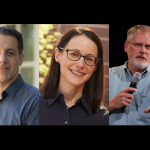Colorful tropical birds…
 |
| Keel-billed Toucan in Belize, Arctic tern in Alaska. P/C William Walker © 2016, 2010 see: BirdWalker.com |
… are one of the glories of the avian world. And I’ve noticed something odd–don’t tropical birds seem much more colorful than the birds that live closer to the poles?
Similarly, isn’t there a tendency for animals to be different sizes if they’re in the north vs. equatorial places? Seems to me that some animals (such as deer or foxes) seem to be bigger “up north” (say, Canada) than “down south” (say, Mexico). There’s a lot of variability, of course, but is there a general trend?
Or am I just imagining things?
Pondering this made me want to frame it as a Challenge for you. Here you go…
1. Is it true that birds have more brilliant colors near the equator, and are less colorful as you go farther north? If so, why would that be?
2. Is it true that the closer an animal species is to the poles, the larger they are? Again, if so, why?
The REAL question for us is how would you find out such a thing? Remember that you’ll want to not just search for positive examples of these observations, but also counter-examples. (In truth, you’ll probably want to find people who can speak with authority about such things. Looking at one or two birds (or even a few dozen animals) over different latitudes probably won’t tell you what’s really going on.
So.. how can you figure this out? (Remember that I can be devious: one of these propositions might not be true!)
Let us know what you discover, and HOW you found out?
Search on!




